by Dr H. L. M. van Schaik
The most important part of the rider’s position is his seat.
The rider may have a very elegant position, but if his seat is not functional then the elegant position is worthless. That is the reason de Pluvinel made the distinction between ‘the elegant rider’ and ‘the good rider’.
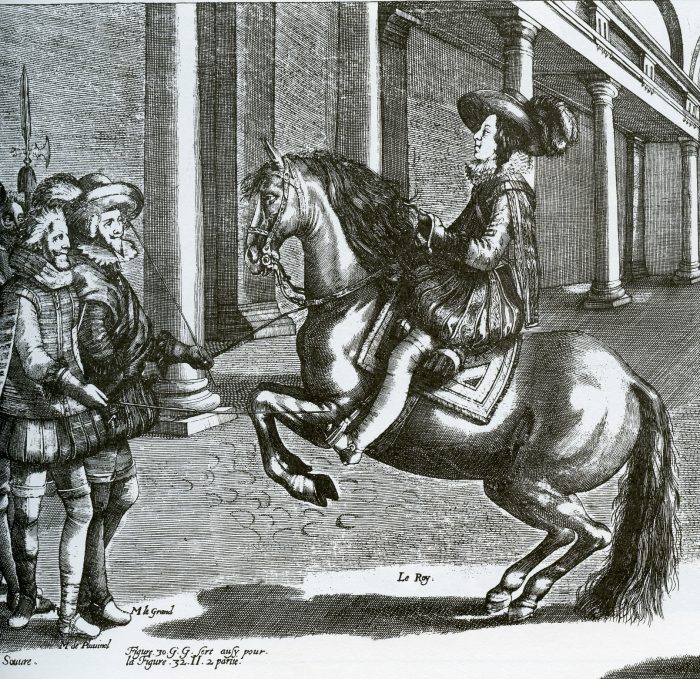
As I see it, the seat has to have three qualities to be functional
A. It has to be secure
B. It has to be light and immobile, and
C. It should be able to act as an aid
A -The only way to be secure on a horse is to be in balance. All the muscular efforts to stay on a horse cause rigidities and make it impossible for the rider to give the correct aids and to feel the horse. One of the principle parts of the human being which helps keep balance is the spinal column, because by swinging the spinal column, forward and backward, one can influence the centre of gravity, which helps in balancing.
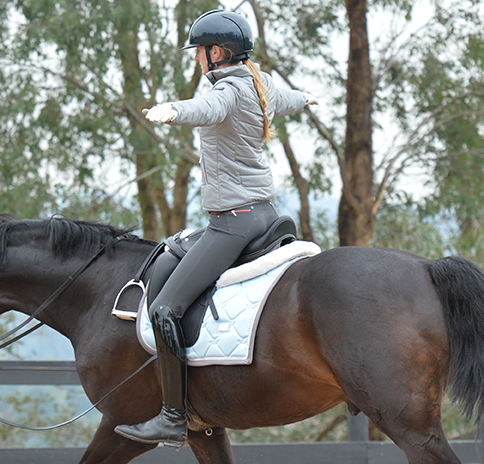
It is evident that the rider can do this only if he prevents his back from collapsing, which is what happens if he lets go with his abdominal muscles.
B – The rider should do his utmost to be light on the horse and try to avoid all unnecessary movements. It is evident that the less of a burden the rider is for the horse, the better and the longer the horse will be able to serve his rider. The only way a rider can make himself light on a horse and avoid unnecessary movements is to make himself tall by using the abdominal muscles. This will prevent him from sitting like a sack of grain on the horse.
There is a wide spread misconception about the deep seat:
It does not mean that the rider should press his seat into the saddle; it does mean that he does not tighten the muscles in his seat to such an extent that it becomes rigid and puts him on top of the saddle. The seat becomes deep, when he de-contracts his seat muscles so that all of his seat is in contact with the saddle. It is also evident that the rider should not, during the sitting trot, bounce in the saddle. In the first place, it is necessary to use a horse that has had so much schooling, that he is able to use his back.
On a horse that cannot use its back correctly, the rider should only rise to the trot.
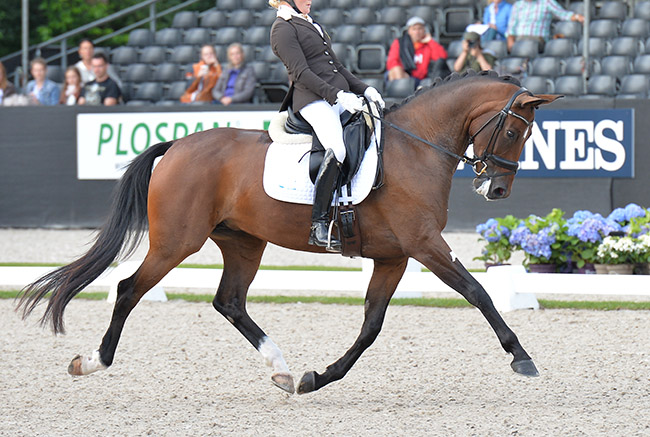
There is a school of thought claiming that the rider can absorb the shocks by contracting and relaxing the loin muscles.
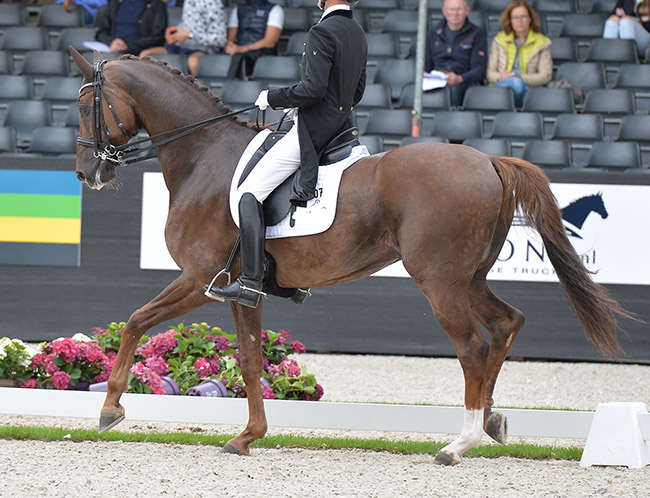
If he makes these movements in order to absorb the shocks, the result is that he then lets the abdominal muscles go and performs a kind of belly dance. This is not only not functional , but it is also very unaesthetic.
From my own experience, I know that the stretching of the spine, by using the abdominal muscles and at the same time avoiding blocking the joints, will eliminate bouncing in the saddle and will also avoid the bobbing of the rider’s head.
I never understood why the stretching of the spine would eliminate the bouncing. I think I have found the answer to this question in Plaisirs Equestres, No 155 in an article written by Louis Fabre. This author claims that because of the cushioning potential of the discs between the vertebrae, the shocks will fade away, vertebra after vertebra, during the stretching of the spine. I am awaiting the verdict of the medical profession on this thesis.
The book, Das Gymnasium des Reiters by H. and V. Schusdziarra (a father and son combination, both are MD’s) has taught me that the back part of the seat bones pressing in the saddle or, for that matter, on the horse’s back, is what has an impulse creating influence. By using his abdominal muscles the rider can tilt his pelvis forward and upward, which makes the seatbones, where they are widest apart, push into the saddle.
The reader will have noticed that for all three requisites, A, B, and C, I have stressed the use of the abdominal muscles. The teachings of the Alexander Technique have confirmed me in the conviction that only by making oneself tall, using the abdominal muscles can one be secure, light and still on a horse and able to create impulse. In other words, one can only stretch the spine by using the abdominal muscles.
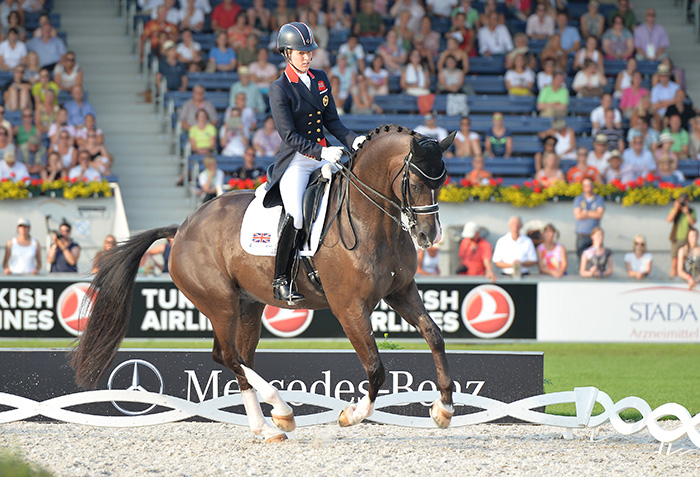
In order to clarify the above, I shall now give a short description of three totally different approaches to the problem of the functional seat and explain why I can not agree with them.
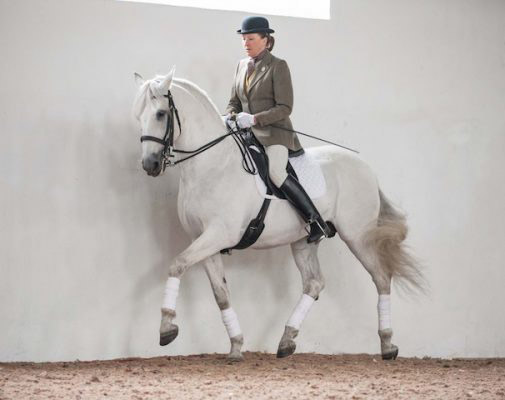
Sylvia Loch who wrote an excellent book about the Iberian Horse, called The Royal Horse of Europe, has in Britain, and in The Horse Magazine, gave staunch support to the three point seat: the two seat bones and the pubic bone.
I could make the discussion very short by quoting the Schusdziarras: “Sitting on both the seat bones and at the same time on a third bony part on the front side of the pubic bone is ANATOMICALLY IMPOSSIBLE.”
Sylvia Loch claims that she does not mean that the rider is all the time on the three points; she mentions that in order to slow down, or come to a halt, the rider should tilt the pelvis in such a way that he is more on the pubic bone. I think that the rider should avoid any unnecessary movements in the saddle, and this movement is not necessary.
Every horse will slow down or come to a halt when the rider makes himself tall by taking a deep breath, using the abdominal muscles and closing the calves, The inhaling makes the back muscles increase the resistanceof the hands, thus avoiding putting on the handbrake, which is what happens when the arm muscles are used. When the rider takes a deep breath and makes himself tall, the tone of his leg muscles will increase, this helps closing the calves, which is necessary in order to keep the hindquarters engaged, and this will prevent the horse from falling apart.
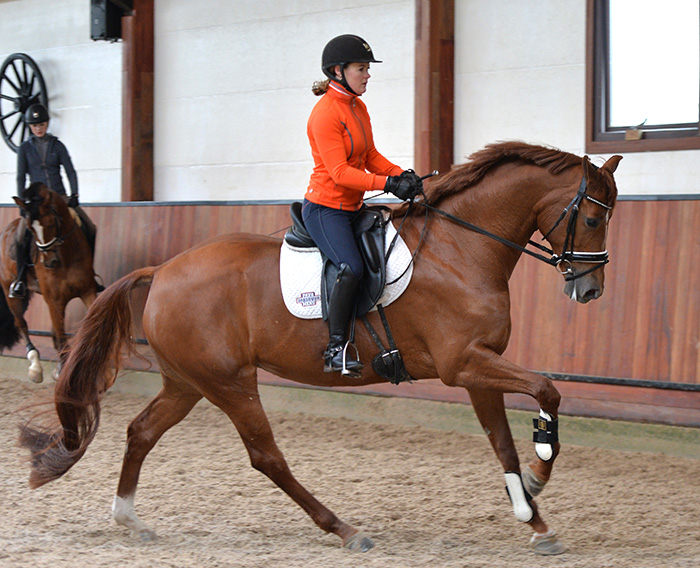
The only movement of the pelvis I allow is when changing direction – a rotating movement – caused by the rotating of the spinal column. Furthermore I suggest an alternating pressing of the seat bones when the rider asks for an extended walk (invisible to the eye of the spectator however).
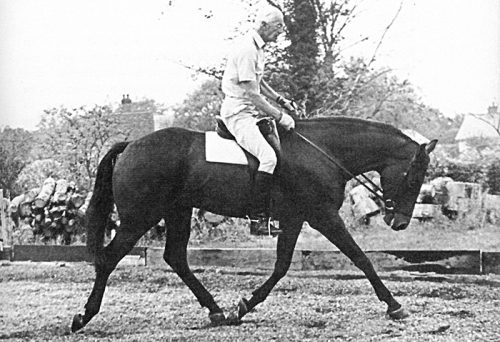
Anthony Crossley criticized Sylvia Loch’s emphasis on the use of the pubic bone. He was very blunt in mentioning the danger to the genital parts. Through my practice as a teacher, I know how right he is. Because of the delicacy of the subject, I shall not elaborate.
…but we will, this wonderful historic exchange is reproduced at the end of this article…
Danny Pevsner in the very first issue of the excellent new British Dressage Review, has written an article putting very much emphasis on the ‘bracing of the backbone’. I think that the expression ‘bracing the backbone’ was introduced into the dressage vernacular by the incorrect translation of an expression used by Müseler, ‘das Kreuz anspannen‘ literally translated, ‘tighten the small of the back’. There is one picture in Müseler’s book, showing an arrow pointing to the small of the back. The text, explaining the picture, says that during the tightening of the small of the back, the lower part of the spinal column, the sacrum (the bone that connects the spinal column with the pelvis) is being put forward. This results in the pelvis at the back side being pushed downward, and in front, upward. A second arrow pushes downward and could have influenced the translator in thinking that the sacrum was supposed to do the pushing.
It always has been my understanding that bracing, as the Dictionary describes it, is imparting rigidity. That is, of course, a concept that has no place in classical equitation. Müseler realizes the importance of the back of the seat bones, but perhaps unwillingly, he gets the sacrum involved and he does not recognize the importance of the abdominal muscles. This has caused a lot of misconceptions.
Pevsner claims that he does not mean the moden German way of bracing the backbone, and he gives a very correct description of the dangers this can cause to the correct seat. But why then, I ask, does he use this ambiguous terminology. Steinbrecht, Seunig and Handler wrote in German, for them this problem never came up. It is the faulty translation that caused the misconceptions, and that is something we have to avoid by all means. If Pevsner had emphasized the importance of the abdominal muscles and had explained that the back muscles have no function in this process, his article would have been excellent.
*** See below for the explanation of ‘bracing’ in the 2007 revised edition of Riding Logic
Sally Swift, the Guru of Vermont, wrote a charming book, pleasant to read because of its ‘imaginative images’ and I like very much the distinction between the ‘hard eyes’ and the ‘soft eyes’. However I call Sally Swift’s Centred Riding a snake in the disguise of a butterfly; it is all dreams and fantasy but the basic philosophy is wrong. A rider should never be centered. The title Centred Riding carries the condemnation of the contents.
There exists a book, The Centred Skier, this makes sense, because the skier has to be solid on the ground, so have the practitioners of the martial arts, they have to be rooted on the ground – with the exception of those who practice Zen, because they use bow and arrow and the sword.
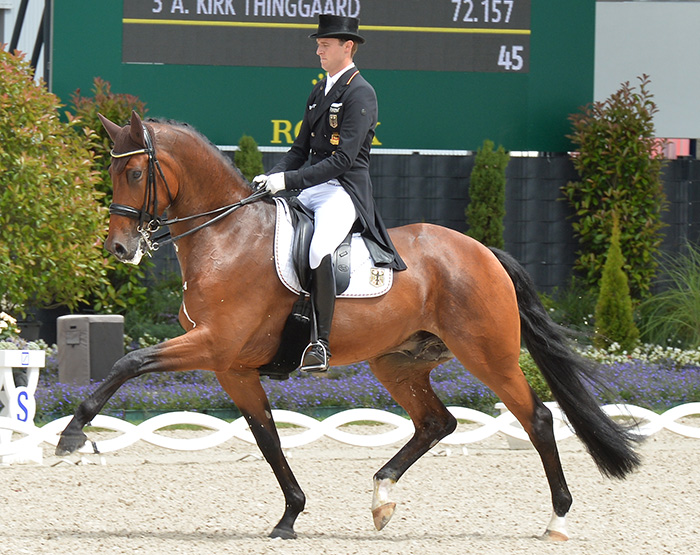
In riding, it is the horse who needs to be solid on the ground. We teach him this by making him get his hindlegs under the load, so that they will not only propel, but also carry his and his rider’s weight. The rider will be solid on the horse when he is in complete balance, being light on the horse, and one with the movement of the horse.
Sally Swift speaks about building blocks and about massaging the back of the horse with the rider’s seat. All these suggestions are the opposite of what, as I see it, are the basic requirements for a functional seat and flout the basics of classical equitation.
I hope that it has become clear where the three authors, cited above, have failed. None of them describes a light and still seat, nor a seat that can create impulse. The trouble is that, in most of the literature, the authors talk a lot about the back and the legs, while the emphasis should be on the abdominal muscles and the seat bones. Because it is only by their skillful use that the requirements of the FEI can be fulfilled, namely: “a horse that gives the impression of doing of his own accord what is required of him” and “all the movements should be obtained without apparent effort of the rider”.
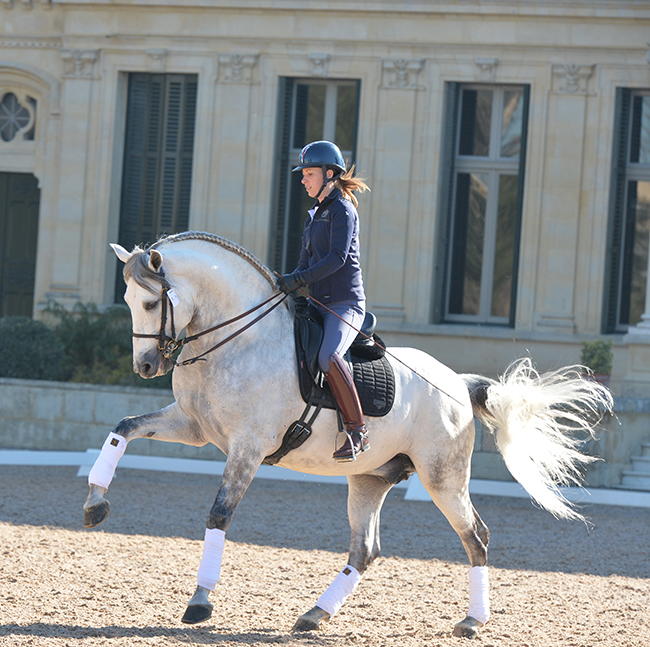
More on Bracing the Back follows
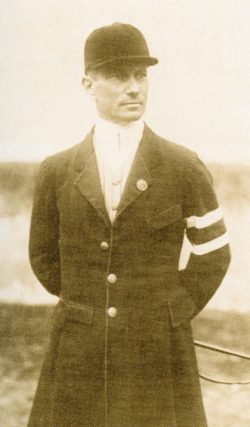
Müseler on Bracing
This is how bracing is explained in the revised edition of Riding Logic, published in German in 2006, and in an English language version by J. A. Allen in 2007. The text was updated by Major Kurd Albrecht von Ziegner:
Bracing the Back
Bracing or applying the back muscles, in an equestrian context, is of the utmost importance in being effective and in giving aids, so much so that is hardly possible to give a proper aid if it has not been mastered.
One only knows how it feels when one has achieved success with it, and then only from a position of relaxation can one experience this special feeling. It is worth making the point that there must be no hint of stiffness in bracing the back. In practicing this activity the rider is recommended to converse, whistle or sing if he wishes. In fact he should do anything that will help him to avoid stiffening up.
In the normal position the spine curves in several places. One can verify this by feeling one’s own spine and those of other people. In bracing the back, the lowest portion of the spine – that which includes the sacrum, the link between pelvis and spinal column – is displaced forward. This has the effect of pushing the rear of the pelvis back and down, and the front of the pelvis upwards and, in this,the two seat bones are pushed forward. The opposite effect is brought about by the rider having a hollow back. Here, the pelvis tips forward and the seat bones end up too far back.
It is possible to apply back-muscle pressure on both sides of one’s body or just on one side, so that both seat bones or just one is pushed forward. It is the reactions of one’s horse, particularly if it has a soft and sensitive back, that will tell a rider when he has learned how to brace his back.
The explanations that follow should clarify for the beginner what is involved in back-bracing. Applying back-muscle pressure on both sides (pushing forward both seat bones):
- On a swing, one braces the back to make the swing go forward and relaxes it for the backward movement.
- If one stands in front of a table with a book resting on the table but projecting from it and touching one’s body, one can push the book wholly on to the table without use of the hands by bracing the back
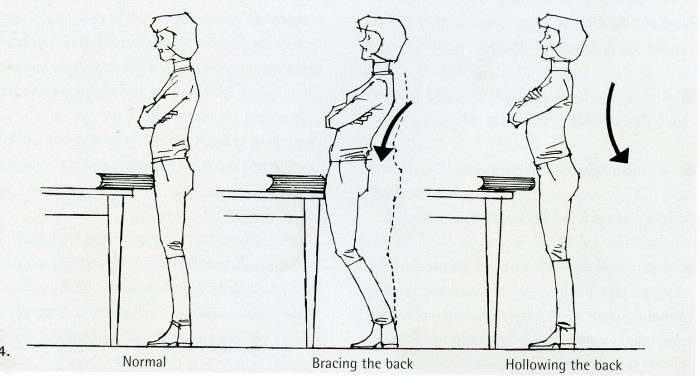
The second example illustrates most clearly the difference between a braced back and a hollow back. Bracing the back pushes the seat forward, which is a requisite for riding, while hollowing the back forces the seat to the rear. Pushing the chest forward and bringing the shoulder blades together are a corollary of a hollowed back.
- If one lies flat on the floor, one raises one’s buttocks only by bracing the back muscles
- If one sits on a chair leaning against its back, thighs and buttocks can be made to slide forward by bracing the back.
- If one sits on a narrow, light stool, one that is easily rocked, with legs apart, much as one might sit on a horse, one can tilt the stool forward by bracing the back. It is emphasized that the legs must not rest on the floor in front of the center of gravity but be placed to left and right of it. If one sits on the front edge of a heavy chair, one can, in the same way, make it tilt. However, it is not sufficient for a would-be rider to listen to these explanations and understand the illustrations. Understanding the movement is no substitute for feeling the action. It needs to be practiced and when one feels one is mastering the art of back-bracing it must be practiced on horseback until it can be done naturally and completely successfully.
Bracing the back muscles on one side of the body (by pushing forward one only of the seat bones):
It is just as important to practice bracing the back muscles on one side of the body as the complete back-muscle structure. Achieving collection, turning and sitting at the canter can only be attained when the rider has learned to push forward his inside seat bone or hip. This must also be repeatedly practiced until it can be carried out in a definite manner.
- A swing can be made to move with a twisting motion by pushing forward one side of the body.
- A person lying flat on the floor can choose to raise just one seat bone from the floor by bracing the appropriate back muscle.
- A person standing in front of a table over the edge of which a book projects can, without using his hands, push the book in a twisting direction from one corner back on the table by using either his left or right back muscle.
It is no more difficult to practice bracing the back in the initial stages of riding than later on. The back muscles can be braced in varying degrees just like any other set of muscles and it is therefore obvious that aids may be given with infinite degrees of muscle action.One can push one’s seat strongly forward or less so, or one can simply brace the back just enough to prevent the seat sliding backward: the back can equally be completely relaxed. But all this is part and parcel of the same exercise.lt is stressed that repeated practicing is essential: it is not sufficient to know about it intellectually.
It must never be forgotten that back bracing is the foundation for a correct seat, for walking on and halting. Aids cannot be given without back-muscle action – a halt then becomes a matter of tugging at the reins. Without back muscle action one cannot sit properly: if the seat is bad one cannot be effective. And on such a shaky basis one has no chance of correcting faults or disobedience in a horse.
The faults that occur in bracing the back are as follows:
- The rider does not practice the movement sufficiently on foot, believing mistakenly that it is enough to have understood what will be required when he is mounted. However, when he is mounted he does not know how to use his muscles.
- The rider does not concentrate on back muscle bracing on horseback to the extent of mastering it. It can only properly be acquired when it is rigorously applied in each walk on, trot on and halt. And it must be borne in mind that the thighs must, at all times, be in contact with the horse’s body. If the rider does not succeed in these aims on one particular horse, he should change to another until it begins to feel right.
It is often said that a rider has a “lot of back”, that he has “a definite back” or that he has “no back.” These expressions are somewhat misleading. All horsemen are endowed with much the same amount of “back,” but they will not all apply it equally. In most people the musculature is of such a strength that it will not give way when unusual demands are made.
Real back pains come into a different category. These may occur through the rider being thrown about at the trot, by riding for too long and similar over-exertions. However, such pains can rarely be attributed to too strong an application of back-muscle action and the pushing forward of the seat.
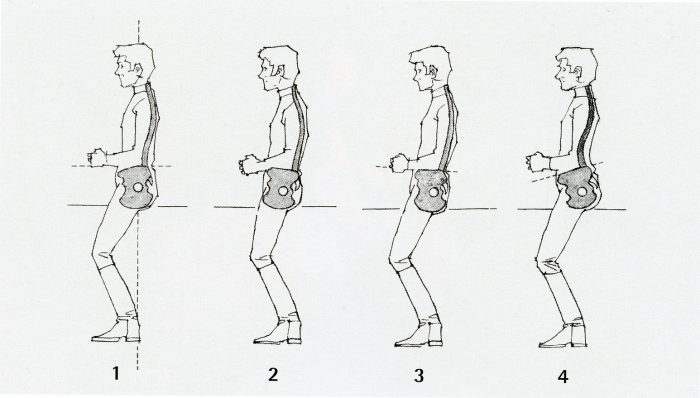
- Normal seat; 2. Braced back; 3. Strongly braced back; 4. Hollowed back (incorrect)
For a great range of top European stallions available this season in Australia go to www.ihb.com.au
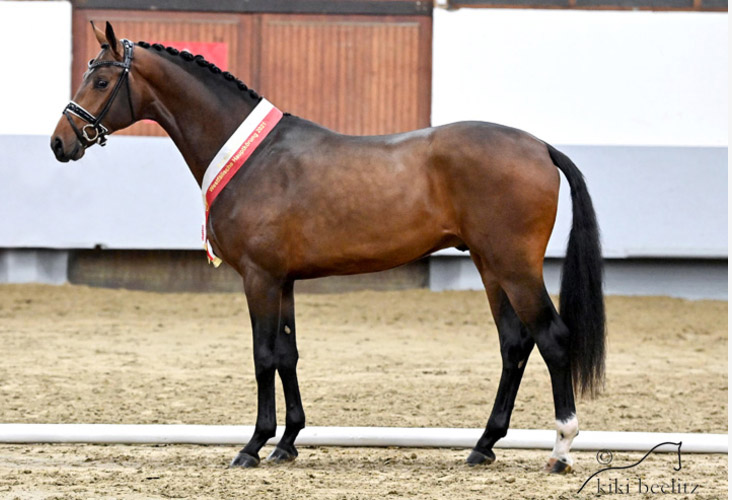
Escaneno

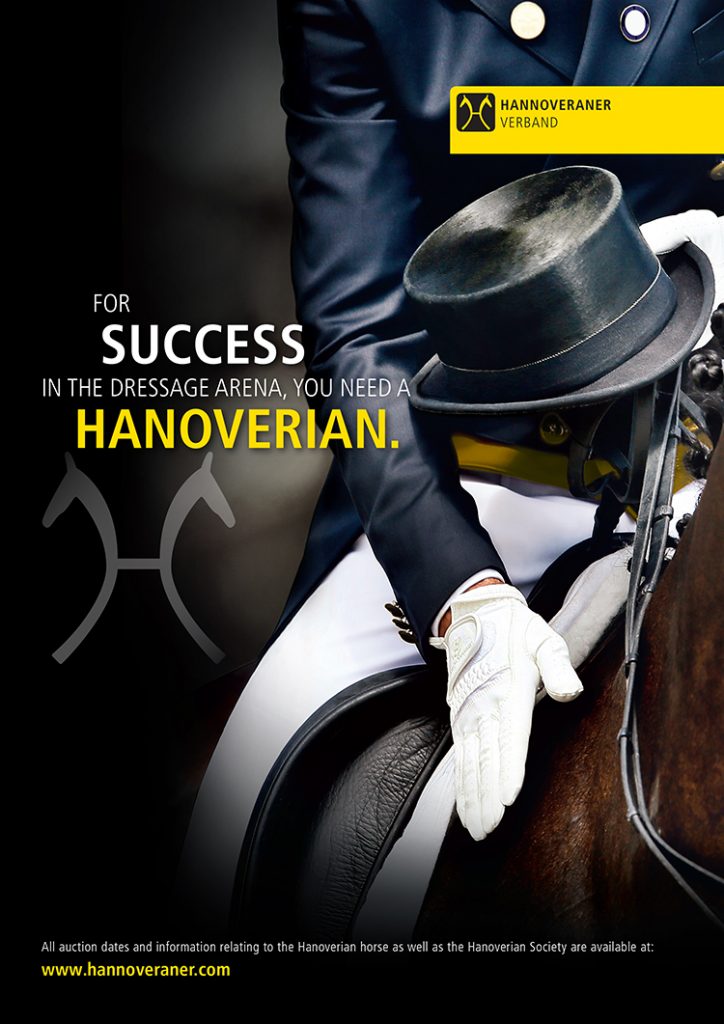
It seems to me reading this that the point that has been missed in the Anthony Crossly/ Silvia Loch debate is that female and male pelvis are very different and modern research has shown this in saddle design. Interesting too that in the braced back the shoulders are down yet riders get confused as they are also told to lengthen the spine. Lots of food for thought and a great article.
Interesting article Chris, probably why I have been reading your mag for 20 plus years! However…Unfortunately there is always a gap in what people think they are describing, and what is actually occurring. Good riding theory understands the basics of the Classical Seat, how it effects the horse underneath it and what happens when it is done incorrectly. However understandably it sometimes misses the correct anatomical or biomechanical knowledge to describe what is actually occurring. The human pelvis (and possibly the equine!) is probably one of the most poorly understood areas of human anatomy. Grey’s Anatomy used to describe the sacroiliac joints (the connections between the bony pelvis and the lumbar spine) as immovable and of little relevance. We know they are not, and in fact spend half our professional lives sorting out dysfunctional sacroiliac joints. Having said that most in the medical and certainly those in the orthopaedic community know so little of the area they will frequently send a patient for imaging with the entire lower area of the pelvis NOT imaged (don’t look at what you don’t understand…).
How does this relate you may ask…Well when those engrossed in riding theory seek to find justification for their theories within medical or scientific literature, they assume the knowledge. DON’T assume. The lack of understanding of pelvic function is astronomical. What is fascinating is that people like Anthony Crossley get so close because they know what works and what seems correct when it comes to riding. And actually his logic is pretty spot on. Sylvia if you had ever dissected a human body you would know that what you are asking is impossible. Or sexist. Of course it is ridiculous to suggest we should have weight distributed down on our pubic bones – girls would be wearing their (!) sensitive girl bits out which are designed for something else entirely, guys cannot simply because they have testicles and a penis in the way! Are we to suggest guys and girls have to sit differently on a horse? No – neither has to weight-bear through their symphysis pubis, but sitting astride on a horse does slightly tighten the tissue in the “crotch area” (read lower abdominal insertion points) which might create the “feeling” of a third contact point. A massive amount of pelvis nutation/ increased lumbar curve/ anterior pelvic tilt, call it what you will, would have to occur to actually cause contact of the PS area with the saddle. And perhaps this is where the confusion occurs. The ischial tuberosities contact the saddle. They are the 2 points of contact. The crotch area perhaps should be described as gently “grazing/ lightly touching” the saddle, and therefore a “secondary” point of contact.
What do we see in clinical practice with horse riders trying to follow “riding theory” and getting lost/sore?
1. Everyone apparently activating their cores (until you test them and they fall in a heap…”). But, they do this by causing some completely unnatural pelvic posture someone thought somewhere (did I say physio?) was a good idea – “tucking their tails” – causing straightened lumbar curves, reduced spinal disc concussion loading as described – and the only solution being a big fat knee roll to brace against… The riders bounce, because they are not balanced over their feet. Do the old remove the horse and how would they land exercise – you now what would happen – they would land REALLY hard, on their butts. And that is what the horse feels every stride. Drives me bonkers.Then they wonder why their hip flexors get so tight…BECAUSE YOU ARE USING THEM TO HOLD YOURSELF ON YOUR HORSE! LET THEM GO!!!! But I have this female designed saddle it is supposed to make it easier – well I’m sorry it doesn’t fit you or your pelvis and all it is doing is tightening you adductors and hip flexors get rid of it! IT IS TOOOOO WIDE FOR YOU!
2. You try to teach them to brace with their abdominals whilst allowing flexible pelvis and lumbar spine motion both as an aid to the horse (read half halt) and as a way of maintaining balance on a moving object. This essentially should occur whilst maintaining a NORMAL LUMBAR CURVE. Do you see Charlotte tucking her tail under forcibly at every half halt on Valegro (not commenting on the WEG). No! But it isn’t easy. It takes coordination. And control. And a functioning pelvis able to move evenly left, right or bilaterally. The spine is movable, so is the pelvis, the abdominals brace to cause stability – this allows a rider to maintain position when a horse moves unexpectedly but also to give the horse a change in speed or direction aid. The average person can’t even pick when they have uneven weight on an ischial tuberosity, let alone move one up for a canter depart, weight one more than the other for a leg yield etc. The good trainers know this but students often think it has to be a muscle wrestle – it’s not, it is about co-ordinated balance. A tripod might remove that need…but then how can we have an independent seat if we have three points of equal contact?
3. Perhaps the last badly explained point is that the braced back (activating the deep core abdominals i.e. transversus abdomens) SHOULD occur with MINIMAL loss of the lumbar curve. (i.e. you should keep your lumbar curve as this ensures good concussive absorption through the spine). This is why good riders look effortless. Now this is not difficult in someone who has good core control. Most people cheat however, tuck their sacrum under (counter nutate their sacral base angle) and then activate their deep hip flexors (fully convincing themselves they are switching on their cores) causing a straight back and hence spinal rigidity leading to lower back pain for horse and rider, bouncing and riding becoming a physical struggle! Plus they seem to move about a lot in the saddle instead of moving effortlessly with the horse. Their hip flexor tightness restricts the horse’s back from relaxing and the cycle continues…
In Conclusion – the Classical Seat is actually anatomically possible, the tripod is not. However the Classical Seat it is not possible when people cheat, buy saddles with big knee blocks or over wide channels or have a pelvis that is by definition dysfunctional or they try to weight bear on their Symphysis Pubis joint. It is as simple as that. Just don’t expect the old guys to have the perfect words to describe everything, try to understand the context of their explanations. Read the old theories. Just with a modern biomechanical understanding. And realise many people tout biomechanics without having any actual biomechanical understanding. At all.
Dr Caitlin White
Gonstead Chiropractor
Intelligent and wonderful reply, Dr White! Great discussion here.
I follow what Mary Wanless teaches, using the ‘bearing down’ (down and out with the pelvic girdle muscles) technique while sitting in neutral spine balanced on slightly tucked under pelvic bones, which means you are ‘plugging in’ to the horses back movement.
Others say you must suck your belly button IN towards the spine, which does nothing for me but lots of bouncing.
Personally, I have found that ‘bearing down’ makes the biggest difference to my riding and the effectiveness of my seat, but it is very tiring. From Mary’s books, it is also highly effective to sit with your heels under your hips (sometimes further back as well), so if the horse was whisked away, you would land on your feet. Knowing this, I have encountered quite a few riding instructors who want the lower leg ‘on the girth’ which brings my lower leg forward and makes my seat somewhat unbalanced. Now I keep my lower leg in the classic balanced position with the heel under the hip, because if I don’t, I find the horse is able to get away with running the show! Similar to being on a runaway motorbike or speedboat.
Take note that bearing down does push out your tummy and hips, and for those of us trying to disguise the middle-age spread, it is confronting!
Saying that, watching Sonke Rothenberger on Cosmo, and Edward Gal, they both sit with their lower legs forward, and watching them sit to the trot is sublime. They just do not bounce! Do not confuse that with not moving though, as to me it looks like they are alternately lifting or rotating each hip to follow the lift and fall of each side of the horse’s back during the trot, they seem to shift slightly from side to side in a quick motion, but I might be wrong.
Absolutely brilliant selection, I have read most of these at times but not recently and this collection in one article is fantastic for the rider who is always striving to be better, even those of us who do not compete any more.